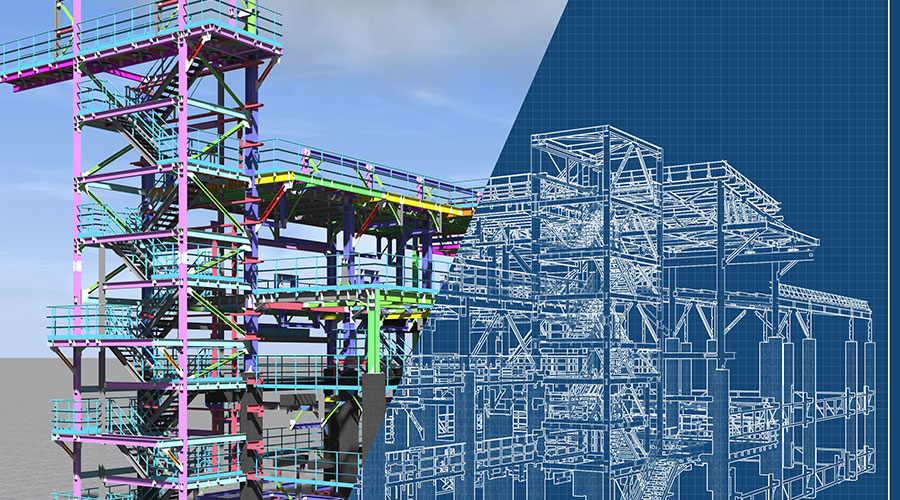Introduction: The Importance of Structural Planning in Projects
Have you ever heard the saying, “Fail to plan, plan to fail”? It’s a common adage, but when it comes to construction and design projects, it couldn’t be more true. Whether you’re designing a skyscraper or planning a small renovation, structural planning is the backbone of any successful project.
In the construction and architecture world, structural planning involves creating a blueprint for how a structure will be built, ensuring that it is safe, efficient, and sustainable. But, what happens when you skip this crucial step? How does it impact the project’s outcome, and what are the risks involved?
In this blog post, we’ll explore the consequences of skipping structural planning and why it’s critical to hire BIM coordination services in Boston or any other area to ensure your project is built on a solid foundation. We’ll also dive into how following a level of development (LOD) standard can make a significant difference in the success of your project.
By the end of this post, you’ll understand the vital role of structural planning and why it should never be overlooked. Let’s get started!
What is Structural Planning?
Before we dive into what happens when structural planning is skipped, let’s first understand what it is. Structural planning in construction and architecture is the process of outlining how a building or structure will be physically constructed. It includes considerations for materials, load-bearing capacity, structural components (such as beams, columns, and walls), and design codes.
A key part of structural planning is the Building Information Modeling (BIM) process. BIM helps in creating accurate digital representations of physical structures, ensuring that all elements work together harmoniously. This is why many construction firms choose to hire BIM coordination services Boston or other locations to make sure their projects adhere to the necessary standards.
The Risks of Skipping Structural Planning
Now that we have a basic understanding of what structural planning is, let’s look at the consequences of skipping this step. Although it may seem tempting to speed up the process, the long-term risks far outweigh any perceived short-term savings. Here are some key risks to consider:
1. Increased Costs
Skipping structural planning can result in costly mistakes. Without a clear blueprint, it’s easy to miscalculate material quantities, ignore important safety regulations, or make design errors that require expensive reworks.
Statistic: According to a study by the Construction Industry Institute (CII), 82% of project cost overruns are due to inadequate planning.
Tip: By working with experts who follow a level of development (LOD) process, you ensure your project is planned to the highest detail, reducing the likelihood of unforeseen costs.
2. Safety Hazards
When structural planning is skipped, the risk of structural failure or safety incidents increases dramatically. Buildings that aren’t planned with attention to load-bearing capacities or materials can lead to serious accidents.
In the U.S., approximately 20% of worker fatalities in construction are due to falls, and another 15% involve being struck by objects.
“The safety of a building doesn’t happen by chance. It happens with careful, methodical planning and execution.” – Structural Engineering Expert
3. Delays in Project Completion
Without a clear structural plan, the project is more likely to experience delays. Contractors and workers may not be sure of their roles or the correct materials needed, resulting in wasted time, confusion, and inefficient work.
Statistic: The Project Management Institute (PMI) reports that 37% of projects fail due to lack of planning and ineffective project management.
4. Poor Quality Control
Structural planning helps to establish quality control standards. If you skip this step, the final result could suffer from poor workmanship, flawed designs, or insufficient materials. This leads to lower quality buildings that may not stand the test of time.
5. Legal and Regulatory Issues
Every construction project must comply with local building codes and regulations. Skipping the structural planning phase may result in violating these regulations, leading to fines or legal issues.
Tip: Working with a team that provides BIM coordination services ensures that your project adheres to local development regulations and avoids costly legal mistakes.
Why You Should Hire BIM Coordination Services
Building Information Modeling (BIM) plays a significant role in the structural planning process. It is a digital tool used to visualize a building’s components and structure before actual construction begins. When you hire BIM coordination services in Boston, you’re ensuring that your project benefits from better planning, reduced errors, and enhanced collaboration between all stakeholders.
Here are some benefits of using BIM in your project:
Visualization: BIM allows you to visualize the entire building in 3D, helping you to identify issues before construction begins.
Collaboration: BIM fosters collaboration among architects, engineers, contractors, and clients. All parties can work from the same data, reducing miscommunication.
Cost Efficiency: By identifying issues early, BIM helps reduce unnecessary expenses, saving you money.
Sustainability: BIM allows for efficient energy analysis, helping you design buildings that are more energy-efficient and environmentally friendly.
By following the level of development (LOD) standard in BIM, you can ensure that your project is planned and developed at the highest detail level. LOD helps define the accuracy and completeness of the model at each phase of development.
Key Phases of Structural Planning
Effective structural planning follows a series of stages. Here’s a breakdown of the key phases:
Conceptual Design: This is the initial stage where the overall layout and concept of the structure are developed. During this phase, the architect and structural engineer collaborate to create a basic idea of what the building will look like.
Detailed Design: This phase involves more detailed drawings and calculations. It ensures that every structural component, from beams to foundations, is properly planned and aligned with the project goals.
Construction Drawings: After the design is finalized, construction drawings are made. These are the blueprints used by contractors to build the structure.
BIM Coordination: Once the design and drawings are in place, BIM coordination comes into play to ensure everything fits together correctly. The BIM model is used to simulate the construction process and detect any potential issues.
Conclusion: Don’t Skip the Structural Planning!
In construction, structural planning is not something you can afford to skip. Whether you’re building a house, a commercial building, or any other type of structure, taking the time to plan ahead can save you from costly mistakes, safety hazards, and delays.
When you choose to hire BIM coordination services in Boston, you’re setting your project up for success. BIM helps you follow the level of development (LOD) standards, ensuring that every detail is accounted for, and every team member is on the same page.
Remember, structural planning is an investment, not an expense. Proper planning helps you avoid problems down the line and ensures your project is built to last. Don’t cut corners when it comes to planning—your structure deserves the best foundation!
FAQs
1. What is BIM coordination, and why is it important for structural planning?
BIM coordination involves using digital modeling to visualize and plan every aspect of a building’s design. It helps identify issues early, improve collaboration, and ensure all components fit together correctly.
2. How can I follow the level of development (LOD) in my project?
Following LOD means ensuring your BIM model has the appropriate level of detail at each stage of development. This includes specific information on materials, components, and the overall design.
3. What are the risks of skipping structural planning in a construction project?
Skipping structural planning can lead to increased costs, safety hazards, delays, poor quality, and legal issues. It’s essential to have a clear plan in place to avoid these risks.
4. Why should I hire BIM coordination services in Boston for my project?
Hiring BIM coordination services in Boston ensures that your project follows best practices, adheres to local regulations, and is planned down to the smallest detail, reducing risks and costs.
5. Can structural planning help prevent construction delays?
Yes, proper structural planning ensures that every phase of construction is well-organized, reducing the chances of delays caused by errors or miscommunication.




